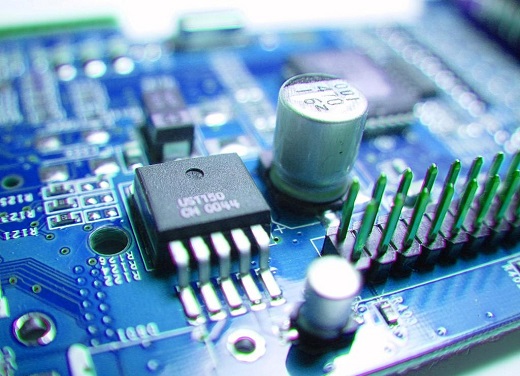At first glance, regardless of the internal quality, the PCB design is similar on the surface. It is through the surface that we see the difference, which is critical to the life and function of the printed circuit board.
Whether in the manufacturing and assembly process or in actual use, the PCB board design must have reliable performance, which is very important. In addition to related costs, defects in the assembly process may be brought into the final product by the design of the PCB board, and failures may occur during actual use, resulting in claims. Therefore, from this point of view, it is no exaggeration to say that the cost of high-quality PCB design is negligible.
In all market segments, especially those that produce products in key application areas, the consequences of this failure are unimaginable.
These aspects should be kept in mind when comparing PCB prices. Although the initial cost of reliable, guaranteed, and long-life products is relatively high, it is still worthwhile in the long run.
PCB board design
Important features of high-reliability circuit boards:
1,25 micron hole wall copper thickness
Advantages: Improved reliability, including improved resistance to Z-axis expansion.
In actual use, under load conditions, during blow holes or degassing, assembly (inner layer separation, hole wall rupture) or failure, electrical connection problems may occur. Ipcc level (the standard adopted by most factories) requires 20% less copper plating.
2. No welding repair or open circuit repair line
Advantages: A complete circuit can ensure reliability and safety, without maintenance, and without risk.
If the repair is not done properly, the circuit board will be cut off. Even if the repair is "correct", there is a risk of failure under load conditions (vibration, etc.). ), which may cause actual use failure.

3. Exceeding the cleanliness requirements of the instrument panel combination instrument specification
Benefits: Improving the cleanliness of PCB design can improve reliability.
The accumulation of residue and solder on the circuit board can bring risks to the solder mask. Ionic residues will cause corrosion and contamination risks on the soldering surface, which may cause reliability issues (bad solder joints/electrical failures) and ultimately increase the possibility of actual failure.
4. Strictly control the service life of each surface treatment.
Advantages: solderability, reliability and reduced risk of moisture intrusion.
Due to metallographic changes in the surface treatment of old circuit boards, soldering problems may occur, and moisture intrusion may cause delamination, separation of inner layers and hole walls (open circuits), as well as other problems in the assembly process and/or actual use.
5. Use internationally renowned substrates-do not use "local" or unknown brands
Advantages: Improve reliability and known performance.
Poor mechanical performance means that the circuit board cannot achieve its expected performance under assembly conditions. For example, high expansion performance will cause delamination, open circuit and warpage problems. Weakened electrical characteristics will result in poor impedance performance.
6. The tolerance of the copper clad laminate conforms to the 4101 standard of the International Electrotechnical Commission
Advantages: Strictly controlling the thickness of the dielectric layer can reduce the deviation of the expected electrical performance.
The electrical performance may not meet the specified requirements, and the output/performance of the same batch of components will be very different.
7. Define solder mask materials to ensure compliance with IPC-SM-840 standard requirements
Advantages: NCAB Group recognizes "excellent" inks to achieve ink safety and ensure that solder mask inks meet UL standards.
Inferior inks can cause adhesion, flux resistance and hardness problems. All these problems will cause the solder mask to separate from the circuit board, and ultimately lead to corrosion of the copper circuit. Poor insulation can cause short circuits due to accidental electrical connections/arcs.
8. Define the tolerances of mechanical features such as shapes and holes
Advantages: Strict tolerance control can improve the dimensional quality of products-improve fit, appearance and function.
Problems in the assembly process, such as alignment/fitting (problems with press-fit pins will only be discovered when the assembly is completed). In addition, due to the increase in dimensional deviation, problems may occur when installing the base.
9. NCAB stipulates the thickness of the solder mask, although there is no relevant regulation in the International Chemical Safety Program
Advantages: Improve electrical insulation, reduce the risk of peeling or loss of adhesion, and enhance the ability to resist mechanical shock-no matter where the mechanical shock occurs!
A thin solder mask can cause adhesion, solder resistance and hardness issues. All these problems will cause the solder mask to separate from the circuit board, and ultimately lead to corrosion of the copper circuit. Poor insulation caused by a thin solder mask can cause a short circuit due to accidental conduction/arc.
10. The appearance requirements and repair requirements are defined, although the instrument cluster is not defined
Benefits: Be cautious in the PCB manufacturing process, and be careful in casting safety.
All kinds of scratches, minor damages, repairs and repairs-the circuit board can be used, but it doesn't look good. In addition to the problems that can be seen on the surface, what other risks are invisible, the impact on assembly, and the risks in actual use?
11. Plug hole depth requirements
Advantages: High-quality plug holes will reduce the risk of failure during assembly.
Chemical residues from the gold deposition process may remain in holes with insufficient plugs, causing weldability and other problems. In addition, tin beads may be hidden in holes. During assembly or actual use, the tin beads may splash out and cause short circuits.
12. Peters 2955 specifies the brand and model of peelable blue glue
Benefit: Specifying peelable blue glue can avoid the use of "local" or cheap brands.
Inferior or cheap peelable adhesives may foam, melt, crack, or solidify during the assembly process like concrete, making the peelable adhesives unable to peel/fail.